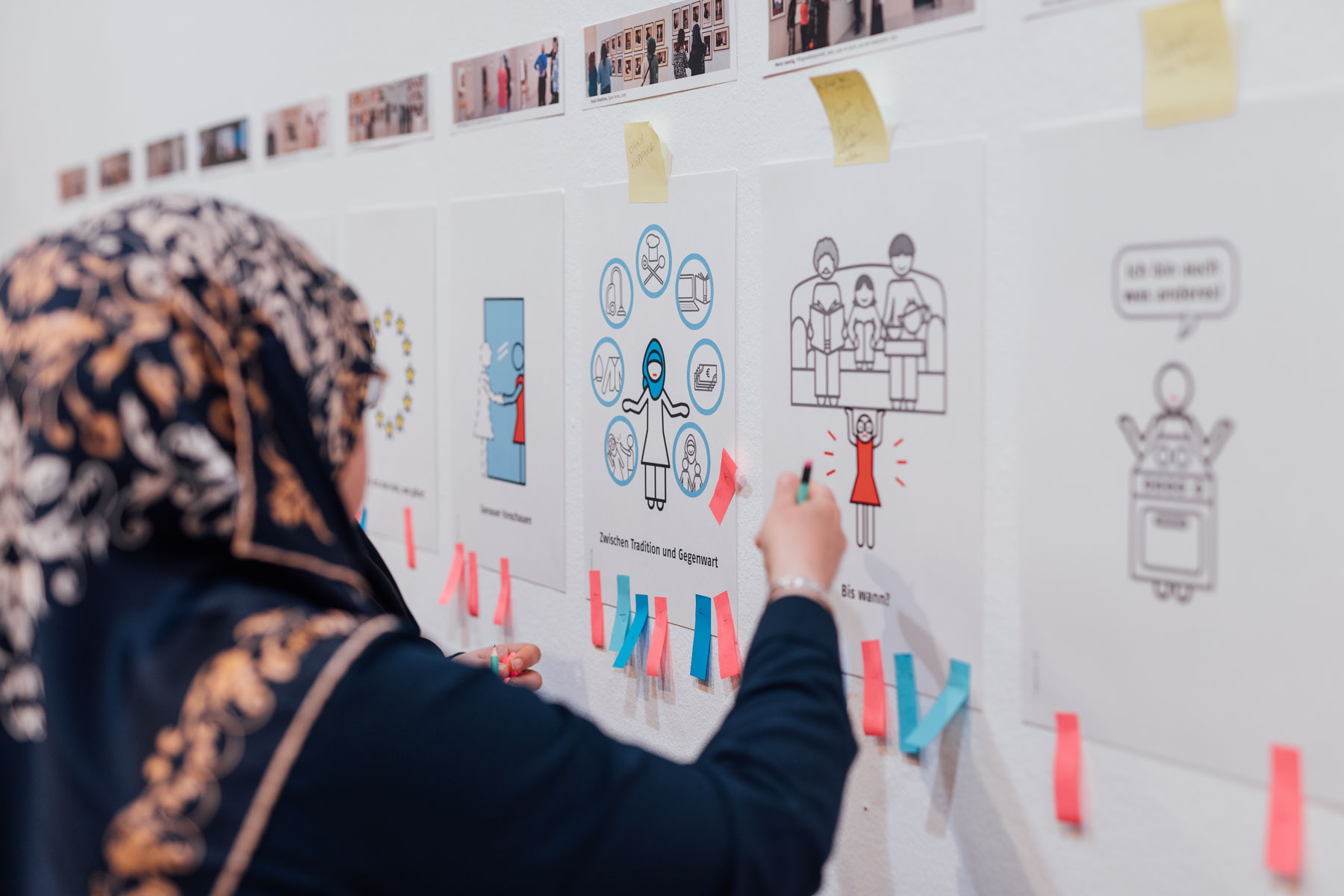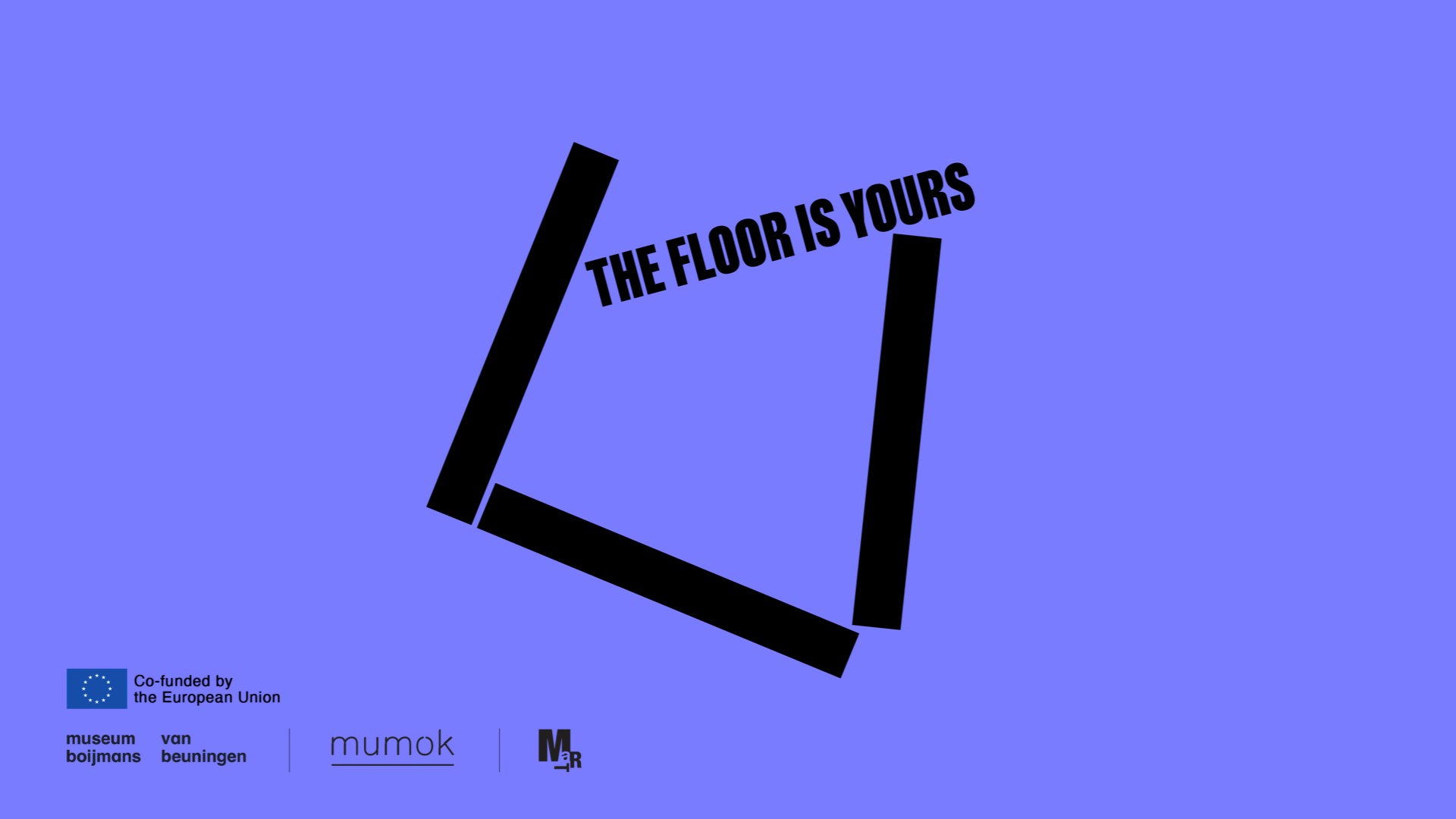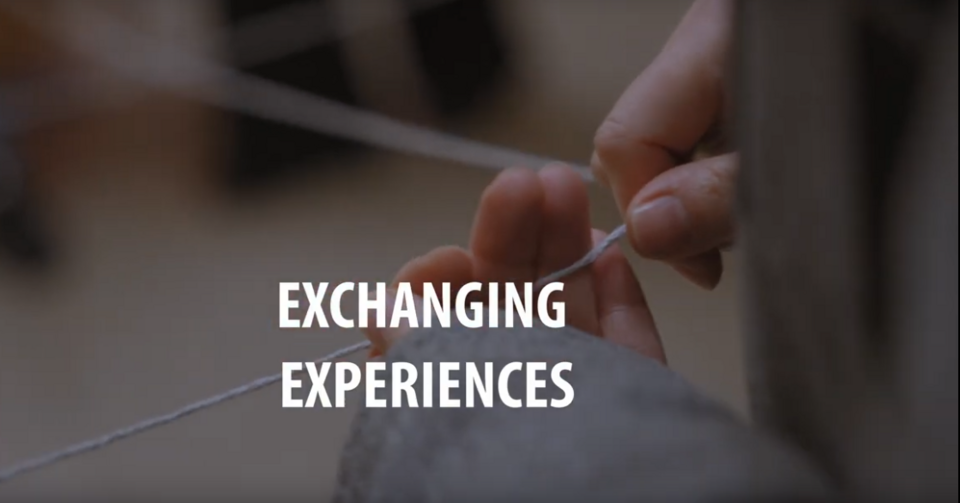Video: ©Mart, Luca Rapetti, 2025

April 2023 till March 2025
Project Completion The Floor Is Yours
Projektbericht The Floor Is Yours
The Floor Is Yours
The two-year project The Floor Is Yours, which from April 2023 to May 2025 connected three museums across national borders with new visitor groups, laid the foundation for an innovative European museum practice. The Museum Boijmans van Beuningen in Rotterdam, MART in Rovereto, and mumok – Museum moderner Kunst Stiftung Ludwig Wien – joined forces to hand over the museum space to those who had previously had little to no say in shaping it. This was made possible through funding from CREATIVE EUROPE.
The explicit goal was to enable a shift in perspective and structural transformation within the institutions, recognizing that visitors are not merely recipients of museum content, but active co-creators and authors of museum narratives.
Beyond mere rhetoric about change, this ambition was most clearly realized through reimagined residencies. Instead of inviting researchers and artists, experts from new fields were brought in to initiate change within the institutions themselves.
In Rotterdam, for example, young students from the Italian LABA Academy collaborated with local Deaf mediators to develop a visual communication system for events tailored to the Deaf community at the Depot Boijmans van Beuningen. In Rovereto, social workers from the association NACHBARINNEN IN WIEN co-created a collage workshop with migrant women at Fortunato Depero’s Casa d’Arte, followed by a parent discussion focused on navigating family stress.
In Vienna, the circle was completed as experts with years of experience in Deaf education critically examined the practices and potential of such formats in the local context.
Each residency yielded tangible outcomes: new logos, prototypes for workshops, structures to reduce barriers, and, not least, institutional changes—along with the challenges, difficulties, and problems that come with genuine transformation. On human, professional, and institutional levels, intangible knowledge about collaboration was continuously generated.
During the final event in March 2025—a symposium at the Depot Boijmans van Beuningen—representatives from all participating communities and museum staff came together to reflect and draw conclusions. Where possible, the following guiding principles represent the essence of this intensive collaboration and honest engagement with the core tenets of working between external experts and institutions:
Genuine motivation and commitment from the outset require a shared sense of purpose. All participants—museum staff, external experts, community representatives—must understand how their interests are reflected in the project. Where this awareness was lacking, collaboration faltered; where it was present, forward-looking partnerships emerged within days.
Sustainable work with diverse communities depends on building long-term relationships. Trust doesn’t grow in a single workshop, but through repeated encounters, shared meals, and spontaneous walks through the city. The project demonstrated that true dialogue on equal footing only became possible after about two years—a valuable insight for institutions often driven by short-term project cycles.
Participatory work demands openness to processes without guaranteed outcomes. Accepting that problems and mistakes are part of change opens up opportunities for learning and lays the groundwork for real transformation.
Listening is the foundation of every co-creative process. In all three cities, workshops were designed only after conversations with participants. The bilingual format used in Rovereto (Arabic/German) emerged directly from the wishes of the invited women. Listening created spaces where people felt safe enough to share their own stories.
Embedding community work in museum practice requires more than consultation. It demands institutional recognition of their expertise. The Deaf community in Rotterdam didn’t just provide feedback; they defined the visual vocabulary of the flyer. This visibly shifted authorship from the institution to the audience. Community representatives must also be involved in decision-making. Where they had a say in key planning matters, sustainable structures were created.
Inclusion requires commitment from all museum departments. Only a holistic understanding prevented symbolic gestures and led to meaningful changes in the everyday operations of the institutions.
The Floor Is Yours produced more than three exemplary projects. It developed a methodology that can serve as a blueprint for other museums: define goals together, nurture relationships, stay open, listen, share expertise, delegate responsibility, and anchor it institutionally. Those who follow these steps create programs that don’t just talk about inclusion—they make it tangible, truly opening the museum floor to everyone.
Outlook: Resulting Programs at mumok
Building on the successful collaboration with Austrian Sign Language (ÖGS) expert Elke Schaumberger, mumok will expand its inclusive education offerings in fall 2025. Based on a promising prototype, specialized workshop sessions for Deaf school classes will be established with the professional support of art educator Lena Schramek. The first workshop morning with students and teachers from the Federal Institute for the Education of the Deaf (BIG) in June 2025 was a great success, with additional sessions scheduled from September onward.
In addition, curator-led tours with sign language interpretation and formats conceived entirely in sign language will be permanently integrated into the program.
Another milestone in the inclusion strategy is the collaboration with an inclusion educator for blind and visually impaired individuals. In cooperation with the curatorial and education teams, he will develop accessible guidance systems for exhibitions and promote the use of 3D-scanned artworks from the Ludwig Collection to enable new inclusive approaches to the collection and its mediation.
In parallel, the association NACHBARINNEN in Wien will design the project space for the exhibition Never Final! The Museum in Transition. This marks another step in the long-standing collaboration between NACHBARINNEN and mumok. As in the 2023 exhibition, curatorial and spatial authorship will be consistently shared with community partners.

The project was made possible thanks to the contribution of Creative Europe, the European support programme for the cultural and creative sectors 2021-2027.
Funded by the European Union. Views and opinions expressed are however those of the author(s) only and do not necessarily reflect those of the European Union or EACEA. Neither the European Union nor the granting authority can be held responsible for them.
© mumok – museum moderner kunst stiftung ludwig wien
